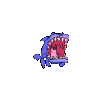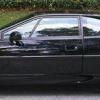-
Topics
-
Latest Update
-
0
-
6
Arctica 1HP Chiller. Selling Cheap.
Want to clear before I go overseas. priced to go now is $488 -
2
-
1
For sale: clowns, tangs, wrasse stripey
Left: Stripey (1.5inch)- $120 Bicolor cleaner wrasse- $15 Melanurus wrasse- $20 Black storm clown pair- $150 Yellow scopas tang- $150 Yellow eye white tail tang- $350 Zebra tang- $2500 Collection at kembangan. Pm or telegram me @caulifloweric to deal -
0
-







Recommended Posts
Join the conversation
You can post now and register later. If you have an account, sign in now to post with your account.